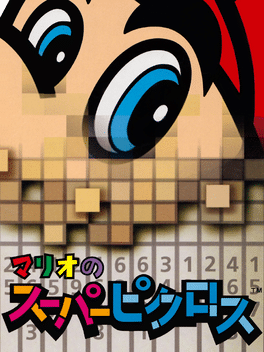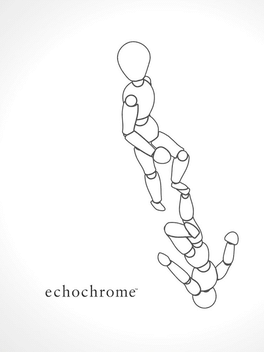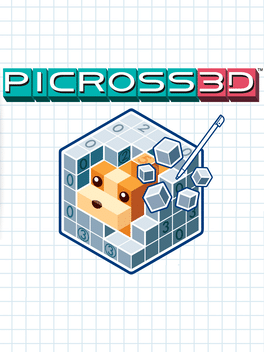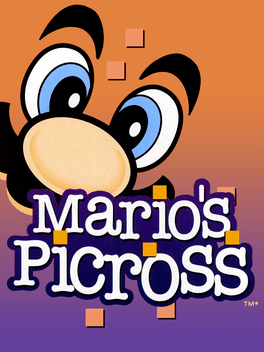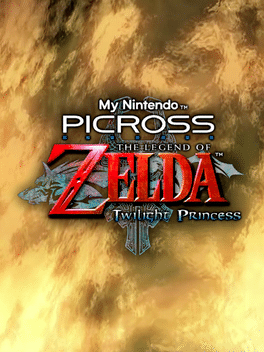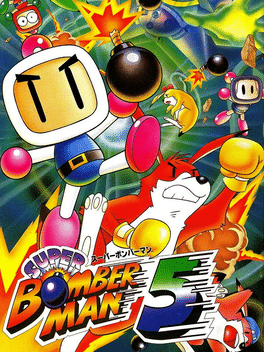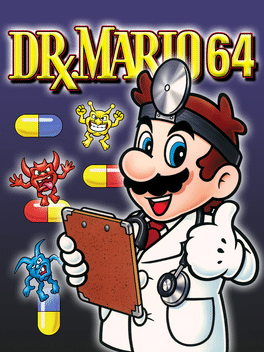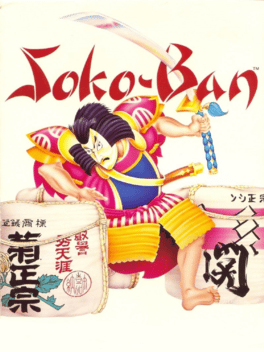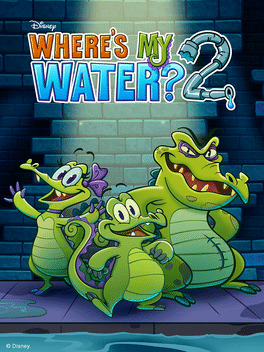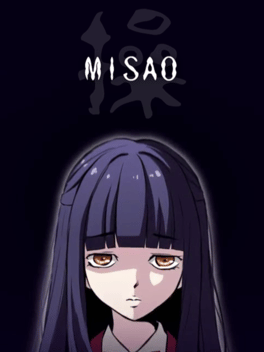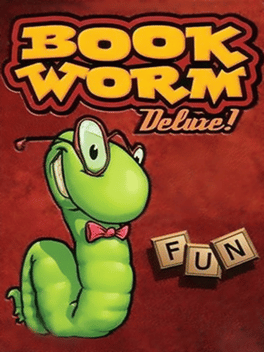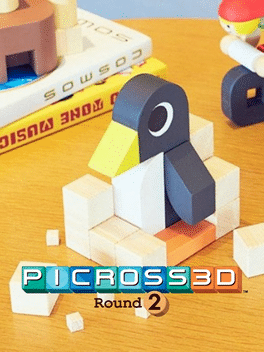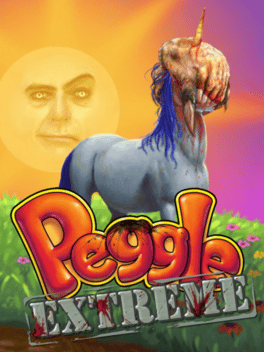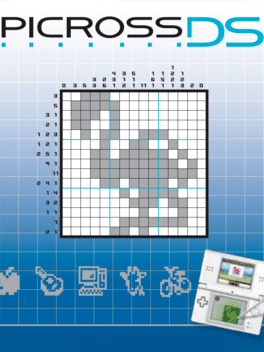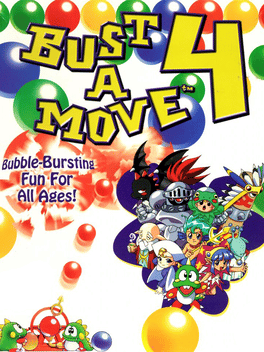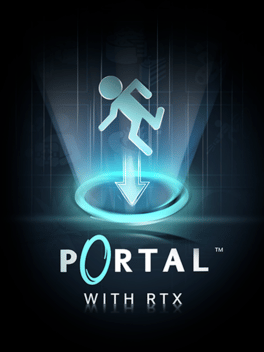Most Popular Puzzle Games - Page 2
-
Mario's Super Picross
1995
star 8.7Mario's Super Picross is the first sequel to the Game Boy game, Mario's Picross, and can be played on the Super Famicom. After the commercial failure of Mario's Picross in the West, this sequel was released only in Japan. The game plays much the same way as the first, except Wario appears in it and presents his own set of special rules, which also return in the sequel. Other features includes game-saves, hints and tutorials. -
Yoshi's Cookie
1992
Yoshi's Cookie
1992
star 7.1Yoshi's Cookie is a puzzle game similar to Tetris, in which the player is given a playing field populated with cookies of five various types arranged in a rectangular grid. The player moves randomly placed cookies into rows and columns of cookies with similar patterns. When a row or column of the same cookies is successfully assembled, the line will disappear, and the player can begin to work on a new row or column. The main objective of each level is to clear the playing field of all the cookies. -
Echochrome
2008
Echochrome
2008
star 8.2Echochrome is a puzzle game created by Sony's Japan Studio and Game Yarouze. Gameplay involves a mannequin figure traversing a rotatable world where physics and reality depend on perspective. The world is occupied by Oscar Reutersvärd's impossible constructions. This concept is inspired by M. C. Escher's artwork, such as "Relativity". The game is based on the Object Locative Environment Coordinate System developed by Jun Fujiki—an engine that determines what is occurring based on the camera's perspective. -
Picross 3D
2009
Picross 3D
2009
star 8.1Picross 3D is the sequel to the popular Picross DS puzzle game. The original game was a number-based grid puzzle that challenged players to reveal a hidden picture. Picross 3D moves the action into three dimensions. Picross 3D blends the logical challenge of a sudoku puzzle with the excitement of discovering the hidden images within. -
Mario's Picross
1995
Mario's Picross
1995
star 7.6Mario's Picross is a puzzle game for the Game Boy and the first game in the Nintendo-published Picross series. In this game, Mario takes on the role of an archaeologist who chisels away the squares in each playfield. The result is a small picture. There are 256 different puzzles to solve, divided into four courses with increasing difficulty level. -
My Nintendo Picross: The Legend of Zelda Twilight Princess
2016
star 6.6My Nintendo Picross: The Legend of Zelda Twilight Princess is a downloadable title only available through the My Nintendo rewards program. -
Super Bomberman 5
1997
Super Bomberman 5
1997
star 9.3An evil Bomber named Emperor Terrorin who has the power of Time itself has freed various criminal Bombers from their prison cells in orbit around Planet Bomber. Setting them up in a warped time and space, Shirobon, Kurobon, and their Louie (Rui) companions must travel through stages and defeat them before going up against Emperor Terrorin himself. Super Bomberman 5, released by Hudson Soft in early 1997, was the final Bomberman game released on the Super Family Computer - the Japanese version of the SNES. The game was released in two variations: a standard cartridge and a gold cartridge, which was sold exclusively through CoroCoro Comic. The gold cartridge included extra maps in battle mode. -
Dr. Mario 64
2001
Dr. Mario 64
2001
star 6.8The flu season has come about, and it's Dr. Mario's duty to use his Megavitamins to heal the people of the land. However, Wario, wanting to have the fame that Dr. Mario has, attempts to steal the Megavitamins, but to no avail. Afterwards, Mad Scienstein and Rudy the Clown (from Wario Land 3) steal the Megavitamins, and both Dr. Mario and Wario give chase. -
Soko-Ban
1982
Soko-Ban
1982
SG-1000 PC-8800 Series Commodore C64/128/MAX Sharp X1 TRS-80 Color Computer DOS Apple II TRS-80 FM-7 NEC PC-6000 Series MSXstar 7.1Sokoban ("warehouse keeper") is a is a classic puzzle game created in 1981 by Hiroyuki Imabayashi, and published in 1982 by Thinking Rabbit, a software house based in Takarazuka, Japan. In 1984 the ASCII Corporation published a version produced by Khaled Bentebal. It was the basis of numerous clones in the later years. It is set in a warehouse. On each level, the player must push crates (from square to square) to get them onto designated spots; once each crate is on a marked spot, the level is complete. Crates can only be pushed one at a time (so two crates next to each other cannot be pushed together), and cannot be pulled--so it's possible to get a crate stuck in a corner, where it cannot be retrieved! By the last levels, you must plan 40 steps in advance. -
Where's My Water? 2
2013
Where's My Water? 2
2013
star 7.6Get ready to join Swampy, Allie, and Cranky on their NEXT exciting adventure! The sequel to the most addicting physics-based puzzler from Disney has finally arrived. "Where's My Water? 2" launches with three brand new locations including the Sewer, the Soap Factory, the Beach. Best of all, the puzzles are all free! Cut through dirt, and guide fresh water, purple water, and steam to help Swampy and his friends! -
Misao
2011
Misao
2011
star 7.5Misao is a freeware horror adventure game where you explore and escape from a high school trapped in another world by a malevolent curse. -
Bookworm
2003
Bookworm
2003
star 5.6Assist Lex in creating various words by chaining tiles that touch each other within the grid. The longer your word, the more points you earn, and sometimes you may even discover gem tiles to increase your score! Be wary though, as fire may sometimes threaten to burn your library if you don't stop it in time. -
Dr. Mario World
2019
Dr. Mario World
2019
star 7Use your puzzle skills to eliminate pesky viruses! Match capsules with viruses and watch them disappear! Simply match three objects of the same color vertically or horizontally to clear them. Take your time, because each puzzling configuration of viruses must be cleared using a limited number of capsules. -
Picross 3D: Round 2
2015
Picross 3D: Round 2
2015
star 8.3Chip away at a three-dimensional block puzzle to reveal the object hidden within. Only this time, blocks can be painted with two colors of paint to mold detailed shapes. Enjoy more than 300 puzzles at the Cafe or even tap compatible amiibo figures (sold separately) to solve 10 more puzzles hiding secret Nintendo characters! -
Peggle Extreme
2007
Peggle Extreme
2007
star 6.2Mayday! The Peggle Institute has been invaded by a host of other-worldly creatures. It's up to you, Peggle Master, to report to duty and shoot and bounce the critters to oblivion. Take your best shot with energizing arcade fun, now exclusively themed with art and sounds from The Orange Box. Peggle Extreme delivers fast-paced puzzle action that combines elements of pinball and pachinko to create a truly unique game experience. As with the original Peggle, Peggle Extreme requires players to fire a metallic silver ball from the top of the screen, relying on gravity to propel the ball downwards while ricocheting off orange and blue "pegs". The goal is to clear all the orange pegs from the screen before running out of balls. A moving "bucket" at the bottom of the screen offers free balls, while green power-up and purple "bonus multiplier" pegs provide additional twists. Peggle Extreme features one power-up in the form of Bjorn the Unicorn, whose special takes the form of a "super-guide" sighting capability which enable -
Shanghai
1986
Shanghai
1986
Arcade PC-9800 Series Sharp X68000 PC-8800 Series Commodore C64/128/MAX Atari Lynx Atari ST/STE TurboGrafx-16/PC Engine Amiga Family Computer MSX2 Nintendo Entertainment System Sega Master System/Mark IIIstar 8.4Shanghai is a computerized version of mahjong solitaire. After winning a game, the tiles reveal the three-dimensional blinking eye of a dragon behind the game screen. The Macintosh and Sega Master System version shows an animated dragon spitting fire. -
Picross DS
2007
Picross DS
2007
star 7.4Fill in squares using simple hints to reveal the hidden picture. Players need both puzzle-solving skills and creativity to earn a picture reward. Each puzzle has a sequence of numbers written in the margins of each column and each row. Those numbers show how many squares within that column or row need to be filled in. Players must deduce where each filled square is based on the numbers in the puzzle. Incorrect guesses earn the player a time penalty. If players solve the puzzle in under one hour, they earn a reward picture, an animated illustration of the thing represented in the puzzle. Puzzles range in size from simple 5x5 squares to much more challenging 15x15 squares—and larger. Players can create and swap puzzles with one another. -
Tetris Ultimate
2014
Tetris Ultimate
2014
star 6.5Tetris Ultimate has six exciting modes, fun new features, and unique visuals, the evolution of this iconic game is the ultimate must-have on next-gen consoles. -
Bust-a-Move 4
1998
Bust-a-Move 4
1998
Arcade Game Boy Color PlayStation 3 PC (Microsoft Windows) PlayStation PlayStation Portable Dreamcaststar 7.3Puzzle Bobble 4 (also known as Bust-a-Move 4 in North America and Europe) is the third sequel to the video game Puzzle Bobble and is the final appearance of the series on the Arcade, PlayStation and Dreamcast. The game is also the final title to be recognizably similar in presentation to the original. Building upon the success of Puzzle Bobble 3, the game adds a pulley system that requires two sets of bubbles, attached to either side of a rope hanging across two pulleys. The game contains a story mode for single player play. In total, the game features 640 levels. The console version features a level editor to either create and save a level, set a succession of levels, or to create an unlimited amount of extra levels and stages. It also has an alternative "story mode". -
Portal with RTX
2022
Portal with RTX
2022
star 8.2Experience the critically acclaimed and award-winning Portal reimagined with ray tracing in this free DLC for Portal owners. Start thinking with portals, with RTX on.
